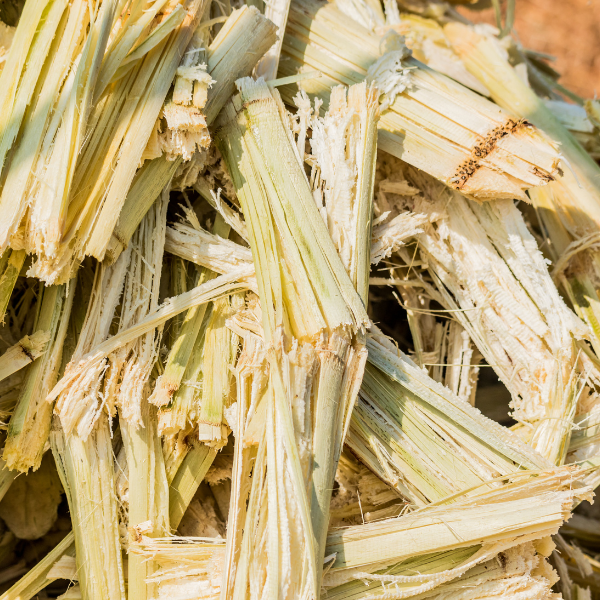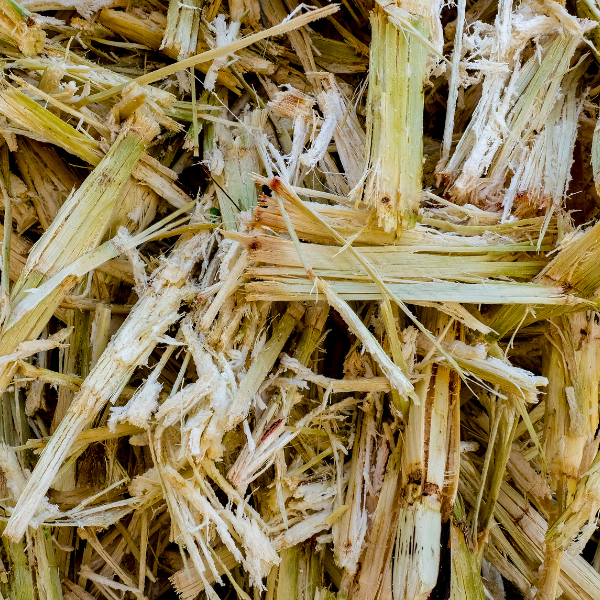Bagasse
What is Bagasse?
Bagasse is a residue that is obtained from crushing sugarcane stalks during the sugar production process. It is a dry and pulpy material that has various uses, including the manufacturing of paper, pulp, building materials, and as a biofuel for energy, heat, and electricity production.

History and Origins
Bagasse is a sustainable resource for paper production.
The term ‘bagasse’ originated from the French word ‘bagage’, which means waste or rubbish. Initially, it was used to describe the debris left behind after pressing olives, palm nuts, and grapes. However, it later became associated with the residue of other processed plant materials. Nowadays, ‘bagasse’ specifically refers to the residue of sugarcane.
One of the primary uses of bagasse is in the paper industry. The method of using bagasse for paper production was invented by Clarence Birdsong at a sugar mill called ‘Hacienda Paramonga’ in Peru. The method was developed in 1937, and the first paper manufacturing machines were designed in Germany in 1938.
It was not until 1950 that the first successful commercial production of newsprint made from bagasse was demonstrated by the ‘Noble & Wood Machine Company’. In 2015, the Paramonga sugar mill, where the bagasse paper process was first developed, produced 90,000 metric tonnes of paper to places like India, Argentina, and Colombia.
Uses of Bagasse
Bagasse has commonly been used as a substitute for wood in many tropical and subtropical countries for paper production.
Bagasse produces a pulp that possesses physical properties suitable for various paper products, including printing paper, newspapers, cardboard, plywood, particle board, xanita board, furniture, and biodegradable plastics.
Production, Storage, and Properties
This is the appearance of raw bagasse.
The quantity of bagasse produced in each country is directly proportional to the amount of sugarcane crushed. Typically, there are about 3 tons of wet bagasse for every 10 tons of sugarcane crushed.
After gathering bagasse fibers from residual sugarcane, they are stored in a wet state to remove any residual sugar that could hinder further production. The bagasse is then mixed with water until it forms a pulp that can be processed further.
The storage method for bagasse depends on its intended use. For electricity production, bagasse needs to be kept moist with a mild exothermic process that gradually dries the fibers over time. In contrast, for paper and pulp production, bagasse needs to be kept wet to facilitate the removal of ‘pith’ fibers. Pith fibers make up approximately 30-40% of bagasse and come from the core of sugarcane plants. These fibers have properties that impede paper production.

Sustainability
Sugarcane is an incredibly fast-growing and renewable resource. Being a by-product of sugar production, bagasse is a sustainable and environmentally friendly alternative to conventional paper production, which relies on wood and consumes more energy.
Bagasse-based plastic and hardware products are completely biodegradable and compostable. Under the right conditions, they can break down in as little as four weeks. Bagasse has gained popularity in the takeaway industry due to its high demand for disposable containers. It allows these industries to adopt sustainable practices with excellent alternatives to takeaway plates, bowls, and paper napkins.
